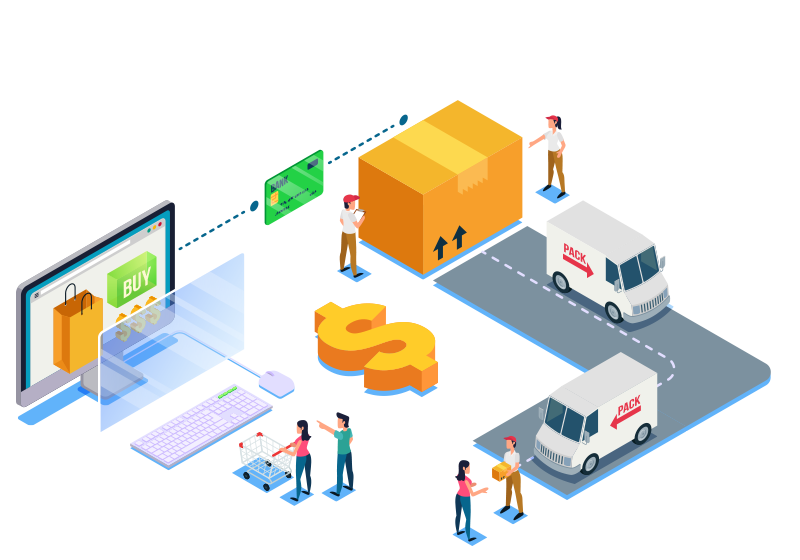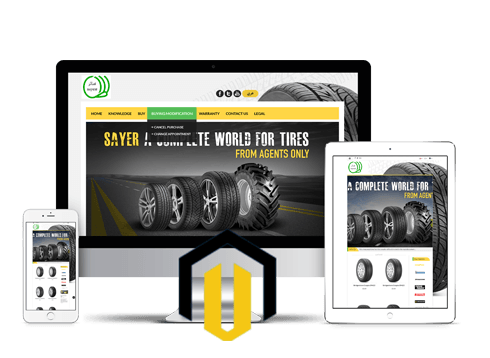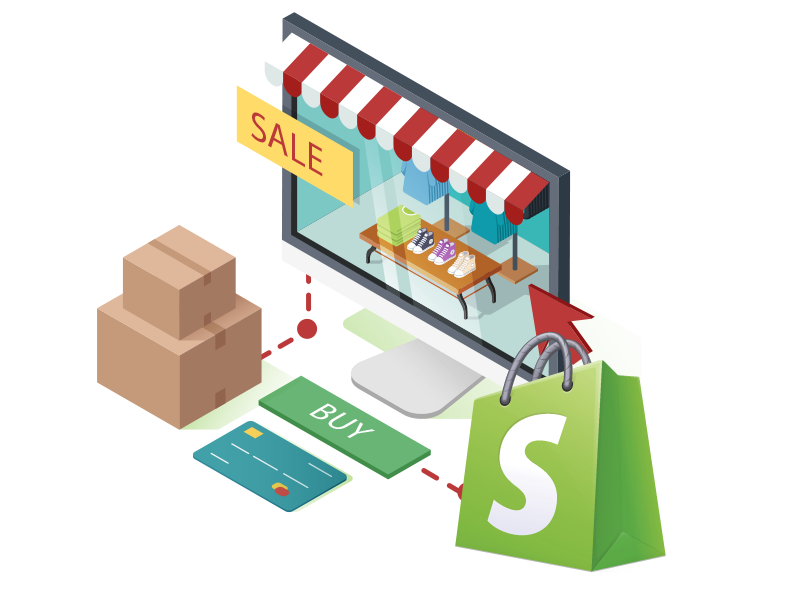How to set up a professional e-store without experience?
- website design company in saudi arabia will help you to set up a proffessional e-store without experience via next :You must choose the e-commerce platform (control panel) suitable
for your needs and ambition. - Selection of the technical partner you can rely on for technical support, commitment, technical consulting, store management training and e-marketing.
- Make a clear action plan for the successful establishment of your e-store from start to finish.
- In this article we will discuss your four potential options, and the advantages and disadvantages of each of them in a way that ensures you the best results, even if you don’t have previous experience setting up an e-store.
- Most likely, the appropriate e-commerce platform (control panel) will be one of the four mentioned here, with more than 50 control panel types, but the one mentioned in this article is the most popular and used.
When you want to set up an e-store for online sale, choosing your e-store platform means (e-store control panel type) is one of the most important steps you’ll take on your journey as an employer (Business Owner) to ensure your project succeeds in how you create an e-store.
When comparing e-store platforms, it can be difficult to see how some minor differences in features and performance can affect how your e-store works, but they will certainly impact significantly later on the online store’s success and growth.
Because it’s the right choice that helps you avoid a lot of problems and lose time such as having the e-store slow or not meeting your needs and ambitions in the future, and most importantly, store stability and continuous scalability to ensure the continuity of your e-store success.
Here are some of the questions we’ll be trying to answer in this article:
Comparison of the best e-store creation platforms
— What are the best e-commerce platforms to fit your needs and the scale of your business growth?
1. What are the advantages and disadvantages of the Magento platform?
When do you use the Magento platform?
2. What is it?


Let’s look at some of the numbers and statistics that are sure to determine your priorities as you create your e-store:
1. The number of users who leave your store and their purchase basket without making the purchase rises by 30% the more time you pay (Checkout process) by two seconds.
2. 87% of users leave their buying basket due to the payment exceeding 7 seconds.
3. 50% of smartphone users expect the entire store page to be uploaded in two seconds or less.
4. Some online store platforms offer free features once created (Out of the Box) while these features are paid for in other platforms.
In this comparison we looked at a wide range of criteria and weighed the performance of each of the online store platforms on a scale of 0-100:
Degree 0-59 Think twice before choosing this platform for your store.
Grade of (60-75) you can make it work after a little bit of work on setting and tuning the platform
The grade from (75 +) is a great platform you can use directly once you’ve prepared it (Ready to use right out of the box)
Here’s a brief explanation about the meaning of the scores:
The overall score is average performance, features, scalability and ease of use.
Performance results are based on (Store Page Download Time, PageSpeed Insights, Page Convenience for Smartphones, UX User Accessibility Results for Store Browsing, Google Site Indexing Improvement Features (SEO)
Features are based on having to have beautiful marketing features
The scalability of being able to sell across multiple channels (such as integration with Amazon products) shows with the growth of your online business and how to connect the e-store to shipping companies such as Aramex, Simsa and payment portals Visa, Master, Repayment etc or payment upon receipt.

Magento
Magento was released in March 2008, and there are statistics that 25% of stores are implemented by Magento, an open source electronic e-commerce platform. It gained significant user confidence and viability for e-stores, and in February 2011 global ebay announced the acquisition of the platform for $1.68 billion. So it’s one of the most important and popular e-commerce platforms in the world. So many world-renowned companies and brands like Burger King, Huawei, Pepe Jeans and Liverpool F.C. built their e-stores on Magento Magento. Even in the Saudi market there are many big stores like Greer Library, Xcite and C. Abdul Latif Jameel
Features of creating an e-store using Magento:
1. Magento is the most Google-compatible platform.
2. Ease of use is the strongest globally and locally in setting up e-stores.
3. More than 9,000 additions are available to this platform and this number is constantly increasing.
4. Magento’s Magento platform is the safest and most protected in e-store platforms.
5. Magento has innovative technologies, such as knowing at what stage people give up their shopping basket and leave the store.
6. The Magento platform has an extensive resource library to explain and clarify the platform’s components as well as presentations, explanations of new plug-ins, store management and everything about e-commerce stores and how to handle and manage them.


Disadvantages of creating an e-store using Magento:
Magento’s use is not for everyone, especially if the e-store owner has a limited budget or doesn’t have a large product count, To keep the Magento store fast you need an advanced hosting, it’s not as easy as what’s available on the WooCommerce platform. in addition to creating a professional store that needs professional programmers on the Magento platform, Be willing to invest in special programming costs and hire a competent programming firm. We are happy to help you. Here at our Internet Solutions Company, we have dedicated programmers on the Magento platform, and we also offer all services related to e-stores and their design, development, training, management of e-stores and an effective marketing plan.
Our vision into how to create an e-store with Magento: how to create an e-store with Magento:
For large and above-medium corporate stores or with a huge number of products, Magento is the perfect pick. It is not recommended for budget-limited clients or customers with a limited number of products due to programming, development and maintenance expenses, as one of the competent companies must be engaged.


Wordpress + WooCommerce for Ecommerce
WordPress store WooCommerce, is a name that needs no definition in the e-commerce world. It comes with a safe push gate and a fast and simple shopping cart, WordPress is open
It’s an open source software solution that works on dozens of sources (Open Source) and is easy to use for any customer, thousands of developers around the world, and so you won’t face any hurdles in solving any software problem you face on this, either free or paid. This is nonetheless compatible with search engines, light in loading, small in size, very flexible, compatible with all the developmental additions your site may need.
Features of creating an e-store using WooCommerce:
1. The store is easy to manage with an easy, seamless management panel.
2. The possibility of adding unlimited product ratings and adding more than one vendor on the platform.
3. As WooCommerce works on WordPress, there are a wide range of additions available of all kinds.
4. A safe push gate.
5. A good shopping cart.


Disadvantages of how to set up an e-store using WooCommerce stores:
The biggest issue with WooCommerce is its lack of scalability. As your business grows and you get more vendors, products and customers in your database, WooCommerce starts to slow down and not be able to perform well.
:Our vision into how to create an e-store with WooCommerce
WooCommerce is a good viable option if your store doesn’t have a huge number of products.

Shopify
Shopify, one of the most important e-store platforms, is located in Canada, and the company works to help online companies around the world with a big focus on e-commerce across different social media platforms and mobile stores. Since its founding in 2004, Shopify has always maintained a good pace in the development process and has used cutting-edge e-commerce technologies, having made strong additions to the platform such as social shopping or (social media platform marketing) so that customers never leave their social platform in order to buy from your e-store.
Shopify stores features:
1. The possibility of setting up store quickly and launching it.
2. The platform has a wide range of English-ready designs, plug-ins and extras.
3. For $29, you can merge Shopify directly with your Facebook account and launch your e-store.
4. The platform has a mobile-compatible shopping basket, vendor mobile apps and many other features available on smartphone devices.
5. Round-the-clock technical support via live chat and phone as well as tutorials, along with a powerful Shopify forum.
6. It can be easily linked to global payment portals.


Shopify stores disadvantages:
Even with all the Shopify features mentioned above, there are some downsides to this platform. The most notable downside is not getting site source and monthly payment plus higher commissions on each sale plus double the potential for ready-made stereotypes and scalability. A platform like Shopify displays few templates to choose between. Of course all of these templates are professionally equipped for e-commerce specifically, but their space is very narrow compared to users’ ambition, especially if compared to a flexible software solution such as WordPress.
Will your shop be in Arabic? Unfortunately Shopify, although available to Middle Eastern users, does not support Arabic as a user interface, and will need customized store Arabization programming.
Also if you have any extra property – not one offered at Shopify – you have to rent out private developer developer services to develop for your account, unlike the WordPress displaying a quantity of Plugins and Add-ons that do just about everything.
Our vision into using Shopify stores
E-commerce workers outside the Middle East can rely heavily on Shopify’s platform but if you’re a starter who needs a quick fix to set up an e-store they can take advantage of Shopify. Yes it’s easy to use and can help you quickly set up an e-store. Based on your requirements and budget, you can choose from Shopify Shopify packages ranging from $29 to $299 per month.


OpenCart
Compared to other open source platforms, OpenCart is actually easy to use and lightweight. And it’s free and it also has a great community of users that you can turn to if you have problems when designing your store. He recommends it to startups because it doesn’t take much time to customise the store from scratch. Due to ease of use, the total cost of creating the e-store decreases.
For example, you don’t have to pay to hire web developers to develop your store, it’s enough that design templates aren’t expensive, and you initially certainly don’t need any paid extras.
Features of how to create e-stores with OpenCart:
1. Your e-store start-up costs are very low.
2. Available features are reliable, contain a strong catalogue and absorb many products, and this helps in the process of implementing many and growing demands.
3. The store the average person can manage and control their settings well and with ease. Not to mention, it doesn’t absorb resources and doesn’t need high Hardware resources like the Magento.


Disadvantages of how to create e-stores with OpenCart:
When you look at Magento’s list of features compared to OpenCart, there’s no real comparison. Magento stores win a landslide.
Whereas:
1. OpenCart’s store performance isn’t strong, so sometimes you have to get a good addition to improve performance.
2. Although easy to use for starters, this means that customization options are also lower. You might think of OpenCart as one of the few open source e-commerce platforms that professional web developers would rather avoid.
| Shopify | WooCommerce | الماجنتو | OpenCart |
| A subscription-based service. | Free software (must be installed on the WordPress platform). | A free platform is independent and a subscription-based service is also available. | An independent free platform. |
| The service includes a sub-domain name and hosting space for your e-store or you can link your domain name. | Part of your website is mainly based on the WordPress platform and all its accessories. | It is independently installed on your web server. | It is independently installed on your web server. |
| Product management features. | Product management features. | Product management features. | Product management features. |
| Application management features. | Application management features. | System management features (+ shipping fee). | It doesn’t have order management. |
| Multiple push gates. | Multiple push gates. | Multiple push gates. | Multiple push gates. |
| Basic customer management. | Basic customer management. | Customer management through customer groups and others. | It doesn’t have basic customer management. |
| Over 100 professional templates. | Thousands of templates are available on the web (free and paid). | Some templates are available on the Internet. | Thousands of templates are available on the web (free and paid). |
| Mobile + compatible You can tweak HTML and CSS directly. | Compatible with the mobile as much as the template you use. | Improved mobile architecture. | Compatible with the mobile as much as the template you use. |
| Traffic Bandwidth is unlimited. | Traffic Bandwidth is based on hosting. | Traffic Bandwidth is based on hosting. | Traffic Bandwidth is based on hosting. |
| Good reports on sales and storage activity. | Good reports on sales and storage activity. | Advanced and in-depth reports on sales and warehouse activity. | Basic reports on sales and storage activity. |
| Management of discounts, gift cards and vouchers. | Management of discounts, gift cards and vouchers. | Management of discounts, gift cards and vouchers. | Management of discounts, gift cards and vouchers. |
| Support for multilingualism, newsletters and API availability |
And eventually here are a few points that will help you choose between these platforms:
There is not a single e-store platform that suits all the requirements and needs but the more accurate and clear your requirements are the more you reach the best solutions available to you, and all the e-commerce platforms discussed in this article are designed for different types of business requirements. The pros and cons outlined are not centered around the bugs available on the platform but have been shown to help you make a measured and accurate decision and choose a platform that best serves your needs.